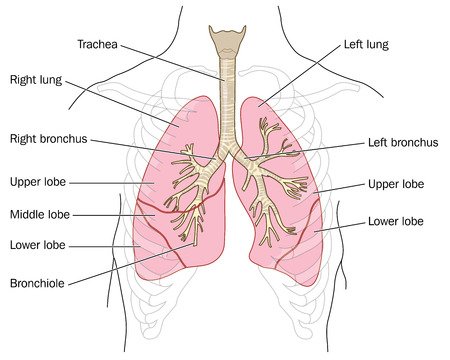What’s This Research About?
Can yoga improve lung function? The researchers reviewed a group of studies that investigated
whether yoga training improves pulmonary functioning in healthy individuals by measuring
respiratory muscular strength, ventilatory capacity, forced expiratory volume (FEV1),
forced vital capacity (FVC), vital capacity (VC), and peak expiratory flow rate (PEFR).
See definitions below or in the Glossary.

TITLE: The Effects of Regular Yoga Practice on Pulmonary Function in Healthy Individuals: A Literature Review
PUBLICATION: The Journal of Alternative and Complementary Medicine
DATE: 2013
AUTHORS : Allison Abel BEd, Lisa K Lloyd PhD, and James S. Williams PhD
Control group: A group of people in a study that do not receive the same treatment (intervention) as another group in the same study. The purpose of having a control group is to give more reliable data with which to compare results. For example, a study on the effect of yoga on cardiovascular health could have two groups, giving one group the yoga program and the other group another exercise program.
Forced expiratory volume (FEV1): At the end of a max inhale a person is told to breathe out as hard as they can. The volume exhaled in that 1st second is the FEV1. It’s usually considered with FVC as a ratio (FEV1 /FVC). With a condition like asthma (obstructive disease) it is harder to exhale a large volume in that first second so the ratio is a lower value than normal. This test is used to assess overall pulmonary function.
Forced vital capacity (FVC): This is measured after a max inhale; the person exhales as hard and fast as they can.
Literature review: a critical analysis of previously published research on a specific topic.
Peak expiratory flow rate (PEFR): Assessed like FVC but measuring the flow rate of air exhaled.
Respiratory muscular strength: The strength of the breathing muscles is assessed by inhaling (Maximum inspiratory pressure – MIP) or exhaling (maximum expiratory pressure – MEP) against an obstructed airway piece and measuring the pressure reached.
Ventilatory capacity: The maximum voluntary ventilation (MVV) is the max amount of air that can be inhaled and exhaled within one minute. In this study it’s calculated from measurements taken from 15 seconds of readings.
Vital capacity (VC): After a max inhale, the person exhales slowly and not forcibly.

